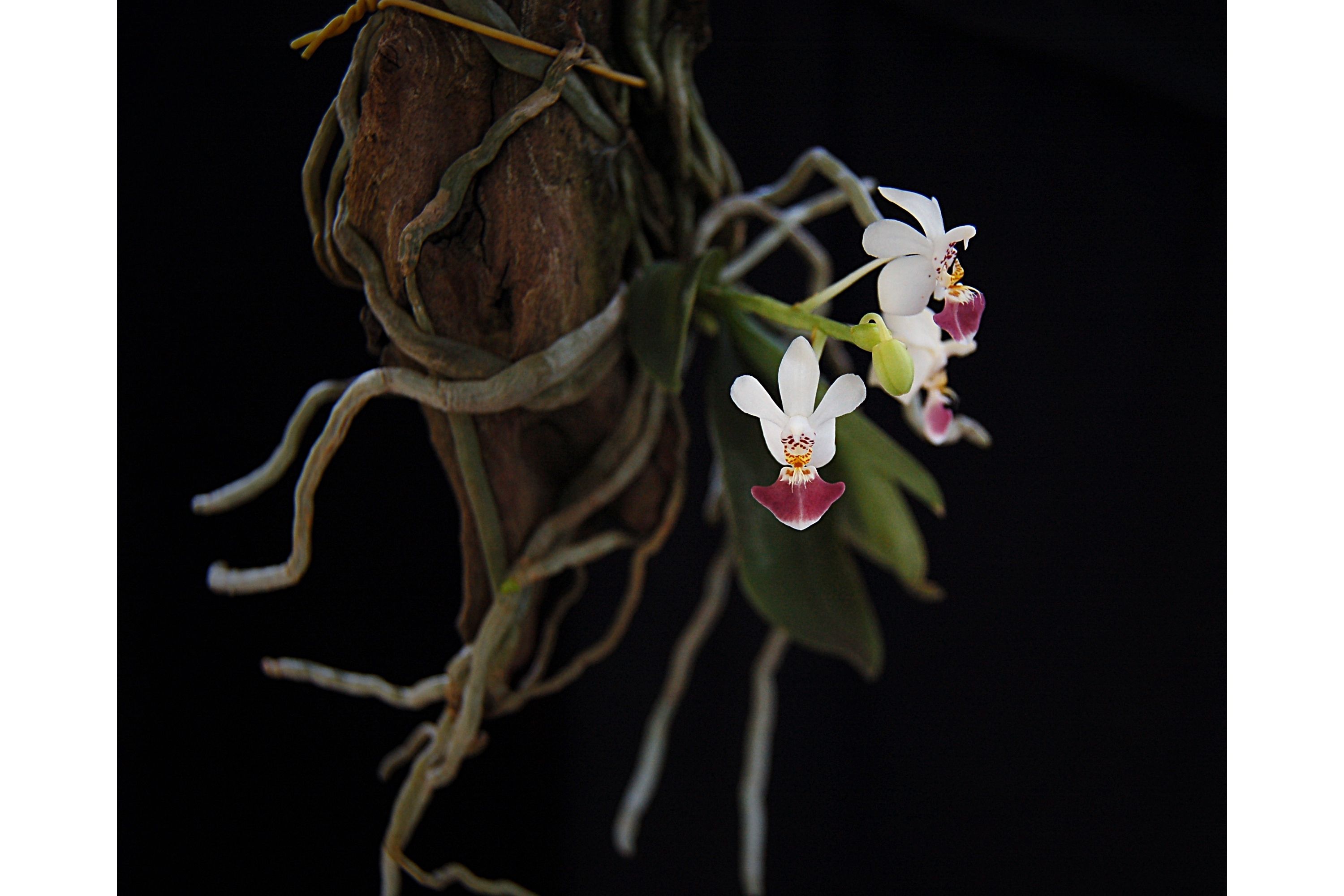Paphiopedilum parishii
(Paphiopedilum parishii)

Description
Paphiopedilum parishii is a species of orchid found in northern and western Thailand, Laos, Myanmar, Yunnan and Assam, in montane forests at 1200–2200 m above sea level. It is named after Charles Samuel Pollock Parish, an English botanist and avid plant collector who had a particular interest in the flora of Myanmar (then Burma). Plants in this species are described as being epiphytes or lithophytes. They grow in thick moss which occurs on boulders or on the tree branches of Terminalia in humid and shady broad-leaved forests, making them facultative lithophytes. Paphiopedilum parishii is placed in section Pardalopetalum based on its chromosome count, multifloral inflorescence, distribution and leopard spots on the petals. The 5-8 leaves are clear green, lingulate, up to 45 by 4.5–7 cm and thick. The 2-7 flowers are 7.5 cm across and open simultaneously on an inflorescence 50-70 cm long. The species has spoon-shaped tips on the long, twisted petals. The petals taper from base to apex. Paphiopedilum parishii is unique in that it evolved a specialised self-pollination mechanism as a possible adaptation to the insect-scarce habitat. The pollen grains and anther liquify and move from the apex of the filament to the stigma. The main pollinator is Allograpta robinsoni, a hoverfly.
Taxonomic tree:







